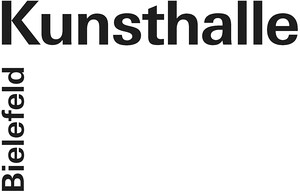In EUROPE everything appears more serious than in the USA
June 16–September 9, 2018
Artur-Ladebeck-Straße 5
33602 Bielefeld
Germany
Hours: Tuesday–Sunday 11am–6pm,
Wednesday 11am–9pm,
Saturday 10am–6pm
T +49 521 329995017
info@kunsthalle-bielefeld.de
In summer 2018 the Kunsthalle Bielefeld presents the exhibition Michel Majerus - In EUROPE Everything Appears More Serious Than in the USA. Michel Majerus was a painter from Luxembourg who worked in the 1990s and early 2000s in Berlin. Majerus became famous for his skillful “sampling” from a rich repertoire of various painting styles and visual spheres from different contexts, through which he subverted the mechanisms of Pop Art and, in comparison to painting of the 1980s, introduced a new sense of ease. The exhibition focuses on Majerus’s early work, which has never been exhibited before. It allows us to realize how very early on in his career the young artist developed the self-confidence and insouciance that distinguished his later work. Even his early pieces are in the unusually large format that became typical of his work afterward.
Michel Majerus was born in 1967 in Esch-sur-Alzette in Luxembourg. From 1986 to 1992 he studied painting at the Staatliche Akademie der Bildenden Künste Stuttgart (State Academy of Fine Arts Stuttgart) under teachers such as K.R.H. Sonderburg and Joseph Kosuth. Even this initially astonishing choice of professors—one, an expressive and gestural painter, the other a Conceptual Art star—is evidence of the freedom with which Majerus approached an extremely wide range of artistic modes of expression. After graduating he moved to Berlin, where he worked for the rest of his life, with the exception of a year-long sojourn in Los Angeles in 2001. Majerus became internationally famous in 1998 with his contribution to the Manifesta 2 in Luxembourg. In 1999 Harald Szeemann invited Majerus to design the exterior façade of the Italian Pavilion at the Venice Biennial. He created a text/image collage titled Sun in 10 Different Directions. With his piece If We Are Dead, So It Is—a 455 square meter half pipe which he painted in 2000 for an exhibition at the Cologne Kunstverein, Majerus succeeded in shifting into three-dimensionality. He died in an airplane crash on November 6, 2002.
Majerus’s approach to painting is influenced by images outside of the fine arts, such as comics, advertising, pornography, or music videos, and yet one can also see the influence of acknowledged artists such as Frank Stella, Gerhard Richter, Georg Baselitz, and others. His paintings feature characters from computer games, such as Super Mario, but they also contain expressive brushwork that recalls the paintings of Willem de Kooning. Majerus regarded the popular iconography of the 1990s, with its logos, symbols, and codes, as a signal, just as he saw and freely utilized various types of artistic styles as a signal. He did not shy away from referring to stars of the New York art scenes of the 1960s, 1970s, and 1980s, such as Andy Warhol, Jean-Michel Basquiat, Willem de Kooning, and Frank Stella. For Majerus, existing pictures, regardless of their background, offer chances to re-paint them. With this, he dismisses as unnecessary the classic notion of the artist inventing images, while at the same time giving them irony. Simultaneously, by harkening back to them, he reflects upon his relationship to paintings produced by others. Of course, artistic techniques such as adaption, citation, allusion, distortion, and appropriation, including the special selection of appropriated images and the conditions under which the selections are made, have always been part of art’s relationship to the “real” world, but in the late 1980s, as digitally produced images arose, the relevance of these techniques was that they were an active means of confronting these digitally created pictures. Very early on, Majerus was enthused over the possibilities of Photoshop, of scaling images, and of other techniques.
Curator: Dr. Friedrich Meschede
Curatorial Assistant: Nils Emmerichs


